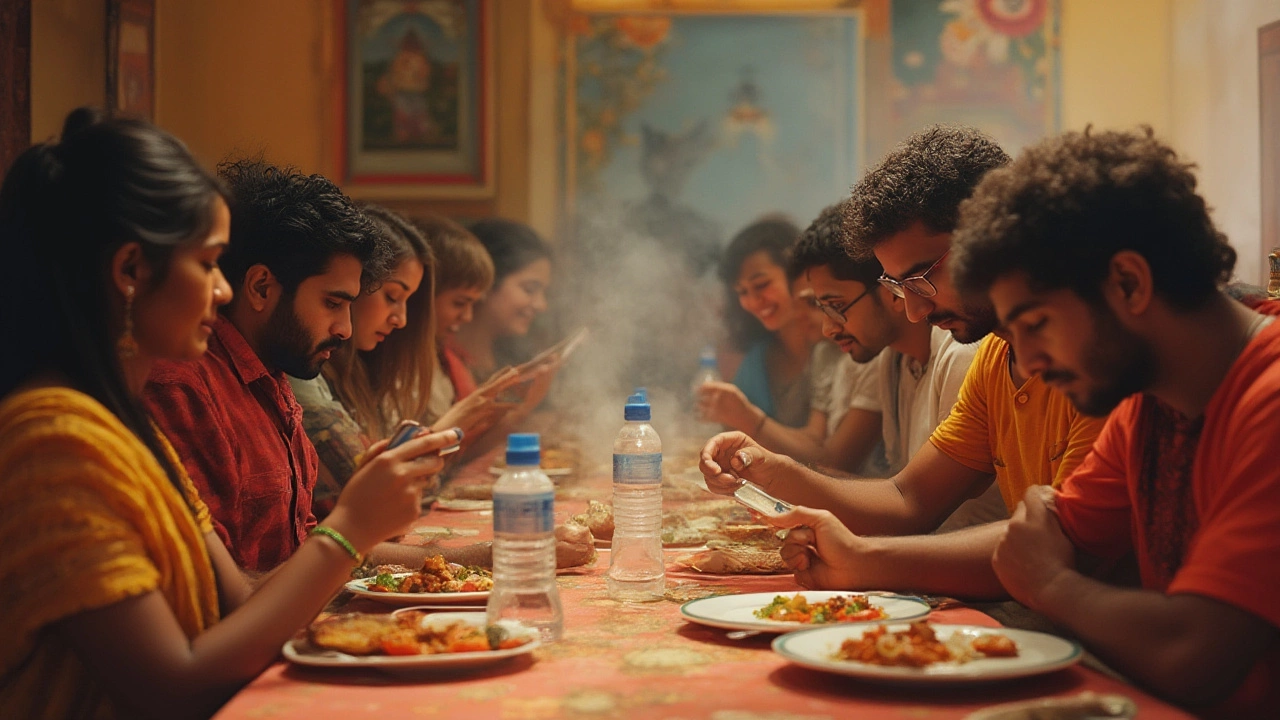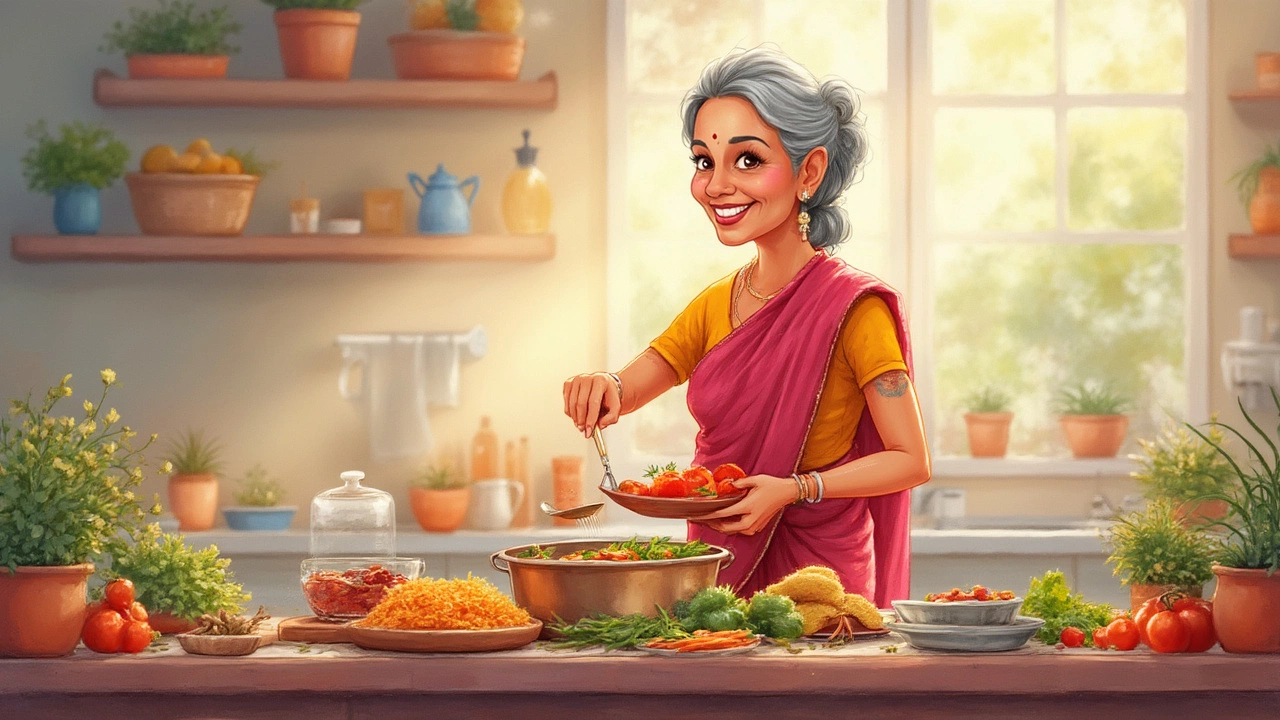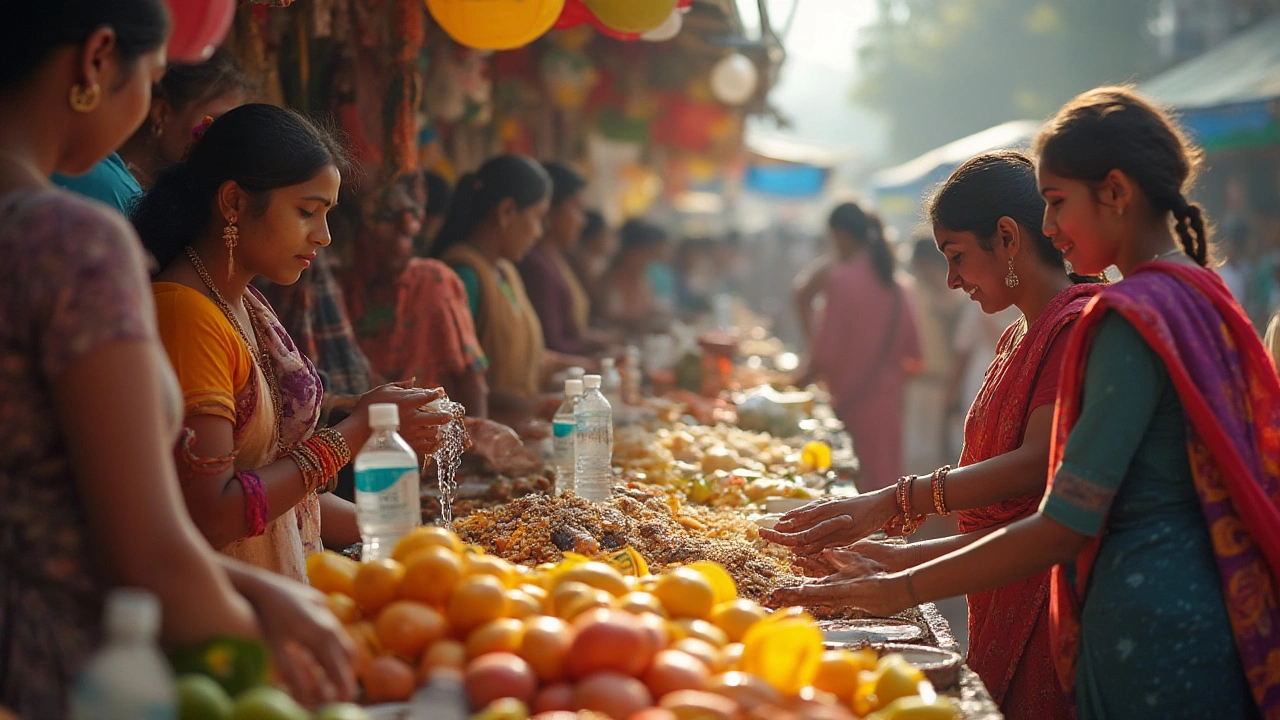Bite into a juicy samosa at a Delhi bazaar or sip a cold lassi in Jaipur—India runs on taste. But if your stomach isn’t prepared, this food adventure can turn into a nightmarish stint with the toilet. Even locals get struck by stomach bugs, so nobody is immune, and the saying 'Delhi Belly' has real teeth. Yet, Indian food is irresistible, and steering clear altogether isn’t the answer. The trick is staying cautious without turning paranoid, so you enjoy every burst of flavor—without fear.
Why Stomach Problems Are So Common in India
Anyone who’s spent a week in India has heard of 'Delhi Belly,' dysentery, or just plain old food poisoning. Cases spike in summer, and you don’t have to eat from a roadside vendor to get sick. Water, the way food is handled, humidity—all these create the perfect storm. Hot climates breed bacteria fast. Street food isn’t always cooked in the cleanest conditions. Even in posh hotels, kitchen workers sometimes forget the basics, like washing hands properly, simply because of how busy things get. Tap water in India is the main villain. Unlike in some countries, it’s not just about taste—there are common bacteria, amoeba, and even heavy metals sometimes. Even ice cubes in your drink can do you in.
Here’s a quick look at how often this happens. In 2022, the Indian Council of Medical Research (ICMR) found that about 40% of travelers had some stomach upset during a two-week trip. Tourists aren’t used to local microbes, while locals have some immunity—but far from total protection. Kids, like my Neerav, can pick up something even from flavored ice sticks or 'golas.' It’s a daily reality here, especially when monsoon hits and drainage leaks into street food stands.
So, why take the risk? Because Indian food is worth it if you play your cards right. With a few hacks, you can taste everything without spending half your holiday in bed clutching your stomach.
Safe Eating: What to Try and What to Skip
Buffet spreads at big hotels look tempting, but if that paneer tikka has sat in a lukewarm tray for a couple of hours—it’s as risky as street chaat. You don’t need to become a hygiene inspector, but a little common sense goes a long way. Here’s what I tell everyone: if you spot flies hovering over the food, or the vendor is touching money and food with the same hands, skip it. If you see a long line at a food stall, that’s a good sign—the turnover means fresher food. Fried foods are usually safest, because the high heat kills most germs. Piping hot samosas? Go for it. Pre-cut fruit plates or salads, especially if they’ve been sitting out, are a no. Avoid anything that could have been washed in tap water: chutneys, ice, cut fruits. Locals have tricks too—like not eating cut watermelon from train vendors or skipping golgappas if the water isn’t filtered.
Fancy restaurants aren’t always safer. Sometimes the kitchen is cleaner at popular dhabas (roadside eateries) than five-star joints, simply because their survival depends on repeat business. I remember Neerav’s first dosa in Bangalore at an old-school eatery. The cook made dosas at lightning speed right in front of us, the batter sizzling hot—can’t get fresher than that. Prefer restaurants with open kitchens, so you can see what’s going on. If you’re a salad person, look for places with 'RO' (reverse osmosis) purified water—it’s a big deal here.
- Go for freshly cooked food, especially if it’s steaming hot.
- Avoid anything raw that may have been washed or prepared with tap water.
- Pick popular stalls or eateries with a crowd, not deserted ones.
- Don’t be shy about asking how food was prepared. Locals do it all the time!
- If it smells a little off, just pass it up—it’s not worth it.

Make Your Drinks Safe: The Water Problem
This one’s non-negotiable. **bad stomach India** isn’t just because of spicy food—it’s often what you drink, more than what you eat. The tap water isn’t just risky for drinking. It creeps into your life in sneaky ways: brushing your teeth, that ice cube in the summer soda, a washed glass at a food stall. Only trust sealed bottled water brands like Bisleri or Kinley, and check the seal before drinking. If the bottle looks refilled or the cap isn’t crisp, chuck it. Ask restaurants if their water is filtered or 'RO.' The word 'mineral water' is thrown around, but that doesn’t always mean the same thing as safe bottled water.
A lot of locals boil water at home. If you’re staying a while, invest in a portable water filter like a LifeStraw—it saves you money and landfill space from tons of plastic bottles. Hotels may have large water dispensers with filtered water; ask if you can fill your own bottle. I always carry my own bottle for Neerav when we travel.
- Skip the ice, unless you know it’s made with safe water.
- Say no to juice stands where they add water (common in places like Mumbai or Kolkata streets).
- Use bottled or filtered water for everything, even teeth brushing and rinsing fruits.
- If you grab a hot chai at a street vendor, you’re pretty safe: boiling kills most bugs!
- Carry instant electrolytes sachets (like ORS) just in case—you’ll find them in any chemist shop.
| Common Water Scenarios | Safe or Not? |
|---|---|
| Bottled water (sealed) | Safe |
| Tap water, anywhere | Not safe |
| Boiled water | Safe if boiled at least 1 minute |
| Ice in drinks | Avoid unless you trust the source |
| Tea/coffee (made with boiled water) | Usually safe |
Personal Hygiene: Your Secret Weapon
No amount of clean eating can save you if your hands aren’t clean. That’s the golden rule parents share here. Indians eat with their hands a lot, and for a good reason—forks sometimes get washed in dubious water. Even if you don’t use your hands to eat, think about doorknobs, bus railings, that banknote you just got back—germs spread fast. Carry small bottles of hand sanitizer everywhere. Use it before you eat, after handling cash, after a trip on public transport—the works.
Public toilets are an adventure, too. In places where soap and running water aren’t available, hand sanitizer is an absolute must. Teach kids to wash hands well, especially before meals. When you’re out with little ones, pack a travel pack of wet wipes and some tissue. I never go anywhere without them anymore, especially after that festival visit where Neerav managed to touch just about every muddy patch in sight. Indians are big on washing hands, and you’ll often see wash stations outside restaurants. Use them, but don’t forget to dry your hands properly. Damp hands attract bacteria like magnets in the humid Indian summer.
- Sanitize your hands before meals and drinks.
- Keep sanitizer, wet wipes, and tissues in your bag at all times.
- If you’re handling kids, make it a game—have them spot the next handwashing station!
- Avoid biting your nails or touching your face after public places until you’ve washed up.
- Teach simple handwashing: soap, water, 20 seconds. Even at home and hotels.

What to Pack and How to Prepare for Emergencies
Even the most careful traveler can get hit with a bad stomach. Your gut isn’t used to the local bugs, spices, or heavy ghee-laden curries. Having a few essentials in your bag makes a world of difference. Start with oral rehydration salts (ORS). These single-serve packets restore lost fluids quickly; a life-saver after diarrhea. Good probiotics (either pills or yogurt drinks) help prep your stomach before and during your trip. Doctors often recommend starting a course a week before coming to India if you’re prone to stomach issues.
Basic medicine kits should include paracetamol, an over-the-counter anti-diarrheal like loperamide (for emergencies—not for every case), and maybe a doctor-prescribed antibiotic just in case. Antacids can help with occasional heartburn from those extra spicy dishes. I always bring a thermometer, because fevers sometimes sneak up when stomach bugs turn serious. Don’t be shy about visiting a local pharmacy: Indian chemists are surprisingly knowledgeable, and you’ll find medicines for every budget.
If you have dietary restrictions or allergies, carry a card with the ingredients you need to avoid, written in Hindi and the local language. Pin this card to your bag or keep it handy for restaurant visits. Be ready to politely turn down food offers; you’ll get them a lot! Most locals appreciate honesty about stomach issues because so many of us have been in your shoes.
- ORS sachets—buy them at any chemist, or pack before your trip.
- Probiotics—start a week in advance if you have a sensitive gut.
- Over-the-counter medicine for diarrhea and fever.
- Travel-friendly thermometer for quick checks.
- Allergy/dietary restriction cards in local languages.
- Wet wipes, sanitizer, and tissue packs.
Here’s an example of what I usually pack for Neerav and myself—a small first-aid pouch we never leave home without—plus a thermos for safe water and a few familiar snacks for emergencies (crackers, nuts, banana chips). Better to have it and not need it than the other way around, right? If you see symptoms last longer than two to three days, or you notice blood or high fever, find a reputable doctor. Many private clinics are English-speaking, especially in bigger cities.
